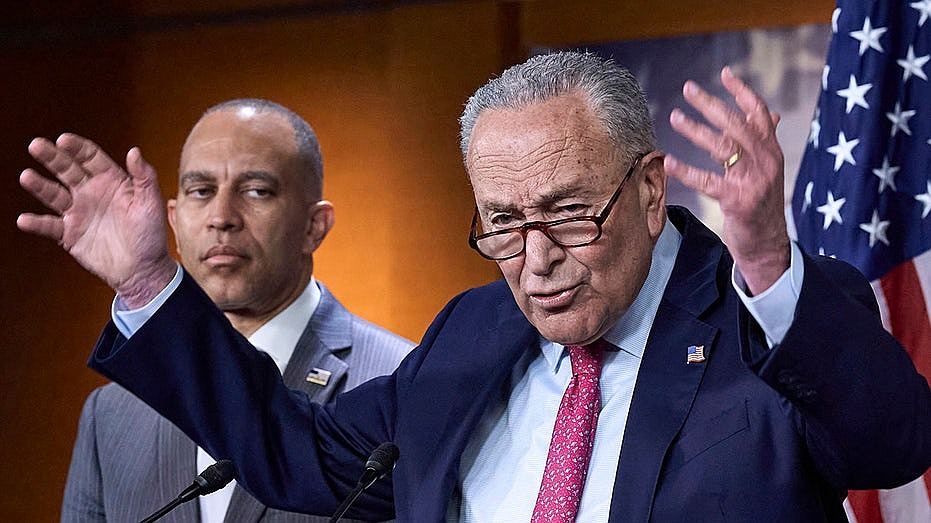Government enters longest full shutdown in US history with no end in sight
The United States is currently experiencing its longest full government shutdown in history, now stretching beyond 22 days with no indication of resolution from Congress. This shutdown occurred as the fiscal year ended on September 30 without the passage of any of the 12 appropriations bills necessary to fund government operations. While both the House and Senate have managed to pass three separate appropriations bills, they have yet to reconcile these differences into a unified spending measure. Consequently, many federal agencies and programs that rely on discretionary funding are either halted or severely limited, impacting thousands of federal workers who have been furloughed or laid off. Essential personnel, including congressional staffers, are forced to work without pay, raising concerns about the financial stability of many families.
The current impasse has drawn sharp criticism from both sides of the political aisle. Speaker of the House Mike Johnson, a Republican from Louisiana, emphasized the prolonged nature of the shutdown and accused Senate Democrats of prolonging the situation by voting against proposed funding measures. Meanwhile, Democrats are insisting that any spending agreement be tied to the extension of enhanced Obamacare subsidies, which are set to expire at the end of 2025. This has led to a stalemate, with Senate Majority Leader John Thune proposing a vote on these subsidies contingent on reopening the government, but Democrats have been hesitant to engage, citing a lack of trust. The frustration is palpable, with Senator Jim Justice of West Virginia lamenting the loss of focus on the real-life implications of the shutdown, stating that it has devolved into a “food fight” devoid of common sense.
As the shutdown drags on, the repercussions are becoming increasingly severe. Active-duty military personnel received their paychecks on October 15 due to a reallocation of funds, but uncertainty looms for their next pay period if the deadlock continues. The historical context of this shutdown is significant, as the longest previous full shutdown occurred in 2014 under President Obama, while a partial shutdown during President Trump’s first term lasted 35 days but allowed for some critical departments to remain funded. The current situation underscores the deepening partisan divide in Congress, with both sides struggling to find common ground amidst rising tensions and public frustration. As the stalemate continues, the hope for a resolution remains uncertain, leaving many to wonder how long this unprecedented shutdown will last and what its long-term implications will be for government operations and public trust in elected officials.
Related articles:
– Link 1
– Link 2
The federal government is now in its longest full shutdown ever, and Congress is not giving any signs that an end is in sight.
A full
government shutdown
occurs when the end of the fiscal year comes on Sept. 30 with none of Congress’ 12 single-subject appropriations bills passed by the House and Senate.
While both the House and Senate have passed three separate appropriations bills each, they have yet to sync up and pass the same version of any spending measure.
That means that, for the most part, all agencies and programs that rely on discretionary funds appropriated by Congress every year are either paused or severely altered to meet their lack of budget.
BATTLEGROUND REPUBLICANS HOLD THE LINE AS JOHNSON PRESSURES DEMS ON SHUTDOWN
The current government shutdown, now 22 days old, is now also the second-longest in U.S. history in general.
Thousands of federal workers have been furloughed, and thousands more laid off. Meanwhile, employees deemed essential, like congressional staffers, are working without paychecks until the shutdown is over.
Active-duty military personnel who were expected to work without pay did get their money on Oct. 15, when the Trump administration reshuffled Pentagon funding meant for research and development. However, it’s not clear if the same can be done during the military’s next pay period on Oct. 30 if the shutdown continues.
SCREAMING MATCH ERUPTS BETWEEN HAKEEM JEFFRIES, MIKE LAWLER AS GOVERNMENT SHUTDOWN CHAOS CONTINUES
A partial government shutdown lasted 35 days under President Donald Trump’s first term but saw several critical departments — including the Department of War, the Department of Education and Department of Health and Human Services — funded.
The previous longest full shutdown occurred in fiscal year (FY) 2014, under President Barack Obama.
“This is now the longest full shutdown in American history. And yet again, Senate Democrats voted for the 11th time — 12 times overall, when you count House and Senate Democrats — to prolong the pain and keep the government closed,” Speaker Mike Johnson, R-La., said during his press conference on Tuesday.
The House passed a seven-week extension of FY2025 funding largely along partisan lines on Sept. 19. The measure, a continuing resolution (CR), is aimed at giving lawmakers more time to strike a longer-term deal for FY2026.
But in the Senate, where several more Democrats are needed to break a filibuster than have been voting for it, progress has stalled, with the legislation having failed 11 times already.
Democrats are demanding that any spending plan be paired with an extension of enhanced
Obamacare subsidies
that are set to expire at the end of 2025.
The shutdown’s historic milestone has been a cause for frustration on both sides of the Senate.
“We have long since lost the plot — the purpose, you know, of the whole thing,” Sen. Jim Justice, R-W.Va., told Fox News Digital. “Now it’s a food fight, and we have forgotten that on the other side of the food fight there’s a name and there’s a family. And I said it just a few minutes ago, but what this place needs more than anything is a constant IV of common sense.”
As the shutdown continues, Senate Majority Leader John Thune, R-S.D., extended an olive branch to Senate Democrats and offered a vote on the expiring subsidies, only after the government reopened, however.
So far, Senate Democrats have not bitten on the proposal, largely due to a lack of trust in their
Republican counterparts.
“I think we would operate much better if people trusted each other,” Sen. Jeanne Shaheen, D-N.H., said.
Sen. Mike Rounds, R-S.D., argued that Senate Democrats made a “strategic error” in shutting the government down.
“Now they don’t have a graceful way out, and that’s a problem,” he said.
Meanwhile, Sen. Brian Schatz, D-Hawaii, didn’t want to predict if the shutdown would break other records but took a shot at House Republicans for being out of session for weeks.
“I will just say it’s very hard to get out of a shutdown if the majority party has an unexpected month-long break,” he said.
Eric
Eric is a seasoned journalist covering US Politics news.



